Birds of Clear Lake
Clear Lake, and the surrounding Lake County, is home to hundreds of species of birds. Clear Lake itself is home to suitable habitat for many different kinds of birds, at varying seasons and ecological conditions of the year. The National Audubon Society has given Clear Lake area the distinction of an Important Bird Area (IBA). If you are interested in when a particular species might be observed around the lake, visit eBird, the product of the National Audubon Society and the Cornell Lab of Ornithology.
The following few (of many) key species can help us identify changes in lake conditions, habitat, and overall ecosystem health.
National Geographic Field Guide to the Birds of North America. Fourth Edition. 2002. and The Cornell Lab of Ornithology. All About Birds. http://www.allaboutbirds.org/guide/search 2013. were utilized to provide the following field marks, identifying features, and life history.
American White Pelican (Pelecanus erythrorhynchos)
- Huge white wingspan with black primary and outer secondary feathers visible in flight. Orange bill and feet. They will often circle high on air thermals or fly in a V formation. The American White Pelican does not utilize aerial dives like similar Brown Pelicans, rather it feeds while swimming with its large bill. A migratory bird that prefers coastal lagoons and shallow lakes for habitat. Nests in colonies where the nest is composed of sticks, reeds, and debris, 2-3 eggs commonly observed . Spends winters in Southern U.S. to South America, although winter populations are observed in the Central Valley and at Clear Lake. It is a California species of special concern and protected by the Migratory Bird Treaty Act of 1918.
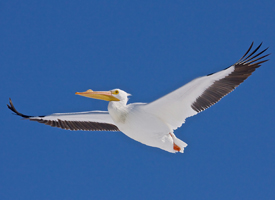
http://www.allaboutbirds.org/guide/American_White_Pelican/id
Osprey (Pandion haliaetus)
- Large bird of prey with brown upper parts and white under parts. White head with distinct black eye stripe. In flight, wings are usually held at an angle and forages for food by flying over bodies of water, hovering in place, then diving into the water to grab prey. Feeds almost entirely on fish and carries the fish headfirst for aerodynamic flight. Worldwide distribution and highly migratory, with wintering taking place in South America or North Africa. Nests are largely constructed of sticks, and added to from year to year on snags, power poles, and trees.
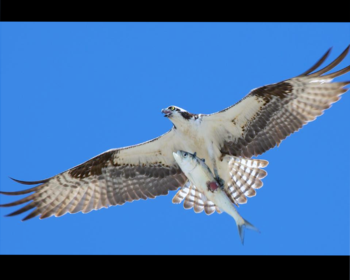
Photo from Lake County News
Wood Duck (Aix sponsa)
- Wood Ducks are known as perching ducks, often sitting in trees, and thus have developed claws to grip the bark. The male Wood Duck is unmistakable, with a green crested head, red eye, red and black bill, white throat, and iridescent purples, greens, and browns overall. Female Wood Duck is distinguished by a gray-brown somewhat crested head, dark eye coloration, and a white teardrop eye patch. Both sexes have a white belly. Calls include a “jeeeeeee” whistle, and a rising “do-weep, do-weep” often when flushed. Preferred habitat is heavily wooded riparian areas, shallow lakes, marshes, and creeks. They nest in tree cavities and also in utilize artificial Wood Duck boxes, where the female lays 9-15 buff white eggs on a bed of downy feathers. They forage while swimming upon vegetation, seeds, snails, and insects. Birds in the Northern part of their range will migrate South towards Mexico. Populations can be found year-round here at Clear Lake.
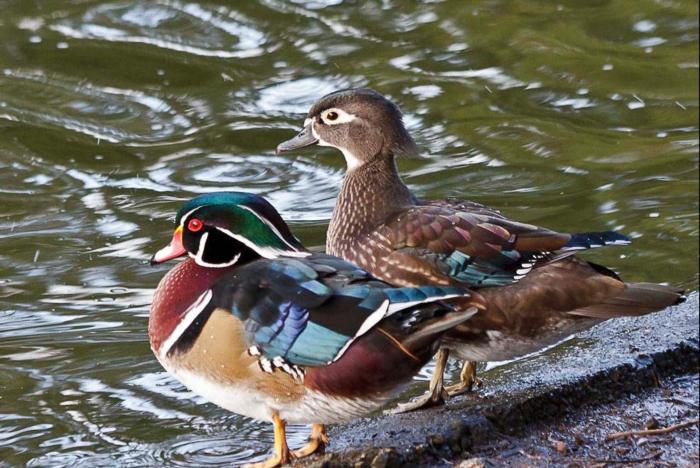
birding.about.com
Yellow-Headed Blackbird (Xanthocephalus xanthocephalus)
- Medium sized blackbird and the only member of the genus Xanthocephalus. Male identified by black body, bright yellow head and breast, and a white wing patch. Female is brown with yellow tinge to upper throat and breast. A sharp pointed bill allows for ground forage of vegetation, insects, and seeds. Preferred habitat is tule/cattail marshes with construction of a deep basket nest attached to vegetation and overhanging the water. Males are highly territorial and attract numerous potential mates to their territory. Yellow-Headed Blackbirds are highly migratory, often flocking together. They spend the winter in Southwest U.S. and Mexico, although in some areas they can be found year-round. They typically show up at Clear Lake in late March and leave the area by early September.
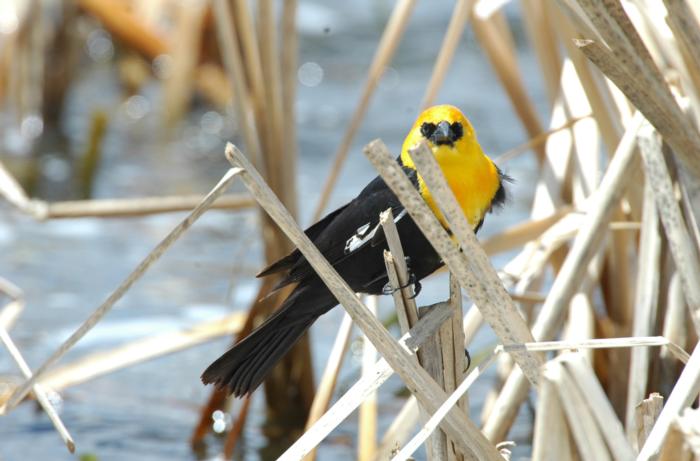
http://www.thayerbirding.com/portals/11/FreeBirdPhotos/yellow-headed-Blackbird.jpg
Western Grebe (Aechmophorus occidentalis)
- A large, long necked grebe with dark gray upperparts and sides, the face and neck are white. A black cap extends below the red eye, with long thin olive-yellow bill. Lobed feet found far back on the body allow for aquatic movement. Sexes are similar in appearance and winter plumage is more gray overall. Easily confused with similar Clark’s Grebe (on occasion hybridization will occur). Juveniles are a light gray color overall. Diet consists of fish, insects, and mollusks which it forages by diving under the water. Breeding occurs in spring after courtship, which involves elaborate dancing and running on water. Birds collect in colonies of hundreds and are quite vocal “kr-r-rick, kr-r-rick” sound often heard.. A floating nest is constructed from reeds and 1-7 eggs are expected. Preferred habitats include coastal bays, estuaries, and large lakes with reed beds.
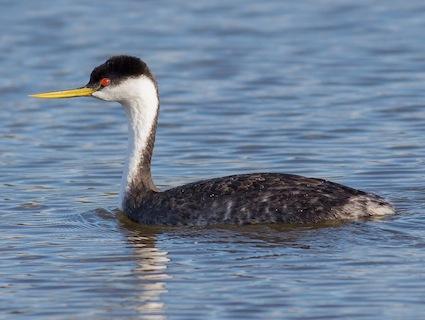
http://www.allaboutbirds.org/guide/Western_Grebe/id
Clark's Grebe (Aechmophorus clarkii)
- Distinguished from Western Grebe by white extension above the eye line and a yellow-orange bill. Face and front of the neck are white, with gray-black upper parts. Young are a downy white color, compared to the gray young of Western Grebe. Habitat and diet identical to Western Grebe. Will overwinter along the Pacific Coast on shallow bays and estuaries.
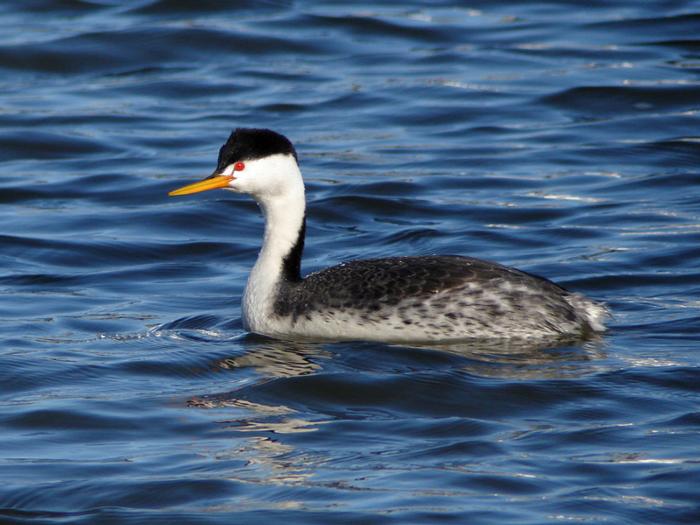
Photo by Wesley Stone.
http://wesweb.homestead.com/birdpix.html

